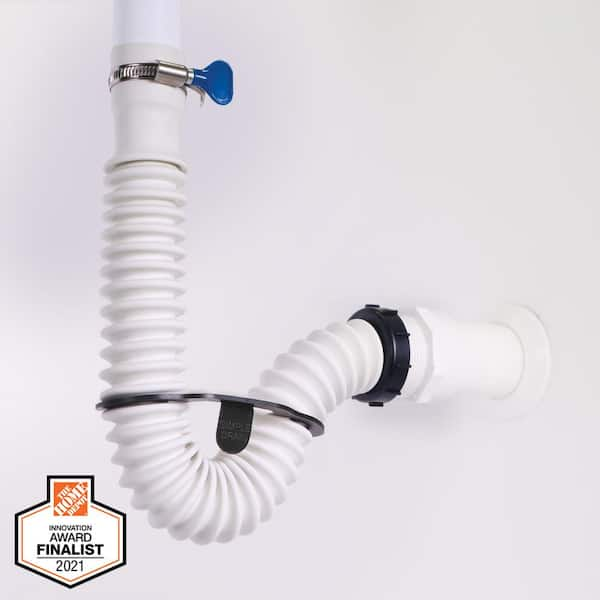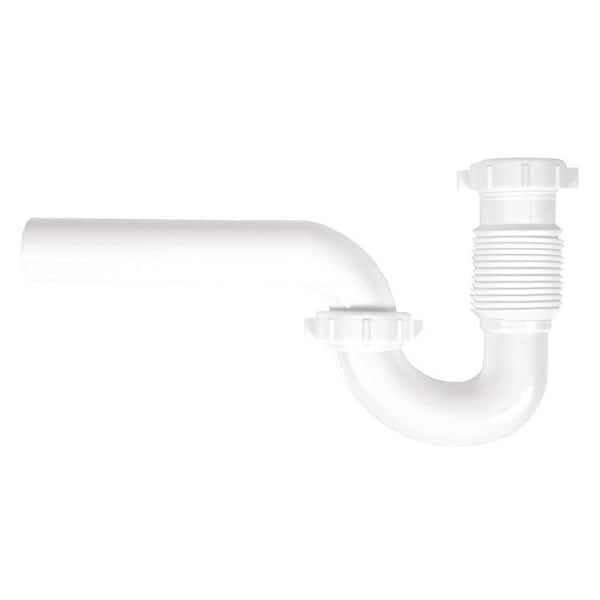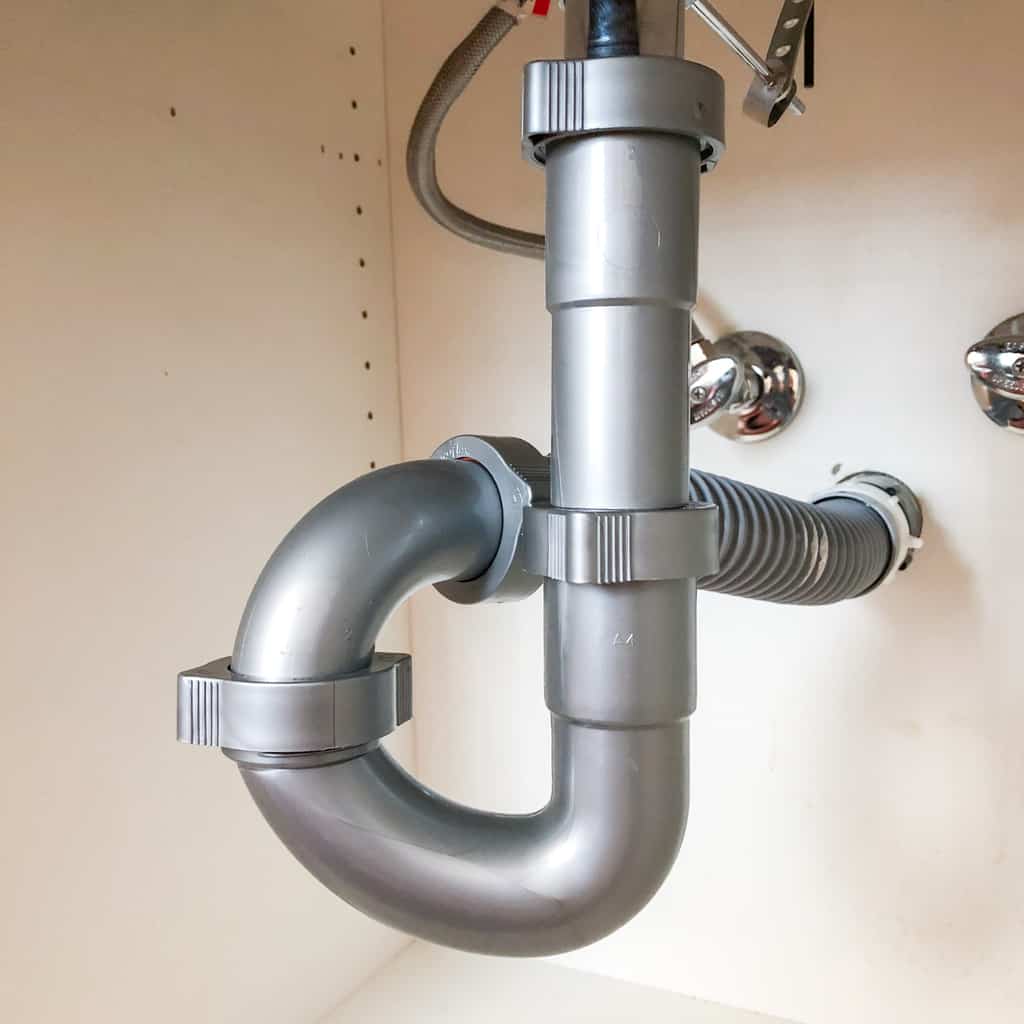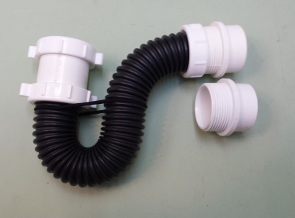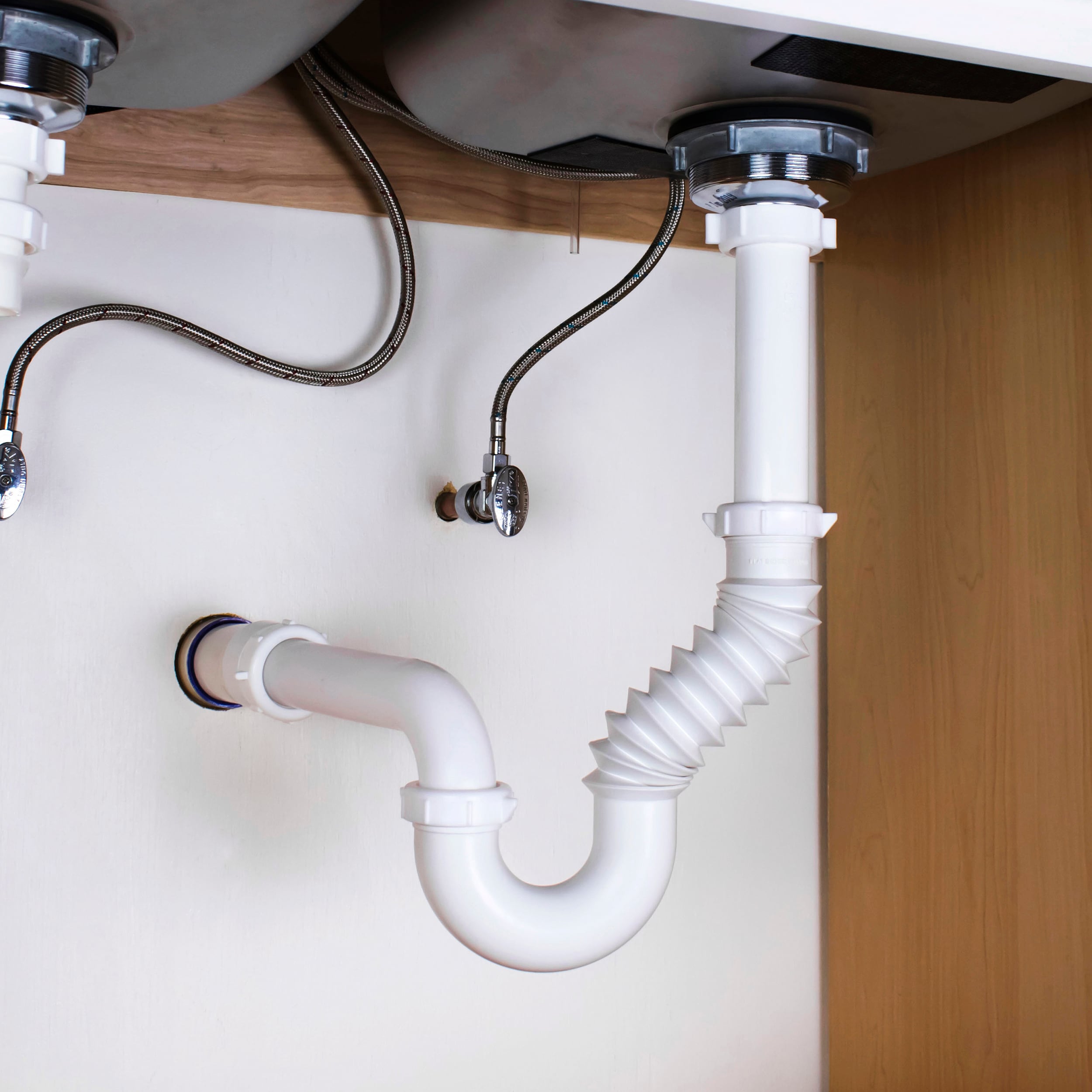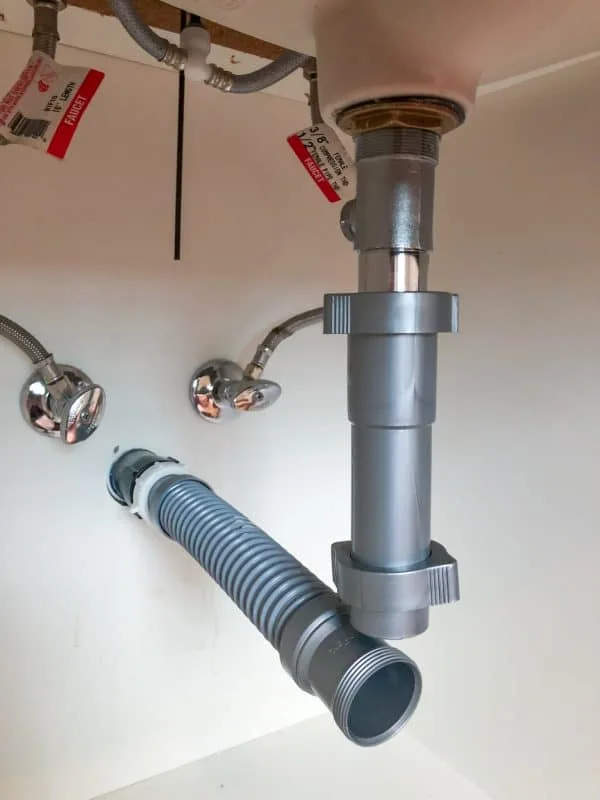Bathroom Sink P Trap Flexible
The Importance of a Flexible P Trap for Your Bathroom Sink
A flexible P trap is an essential component of your bathroom sink’s plumbing system. It plays a crucial role in preventing sewer gas from entering your home, ensuring proper drainage, and maintaining the overall functionality of your sink. Let’s talk about the importance of a flexible P trap and explore the benefits it offers.
- Enhanced Durability and Leak Prevention: One of the primary advantages of a flexible P trap is its durability. Unlike traditional rigid traps that are prone to cracking or breaking under pressure, a flexible P trap is made from high-quality materials that can withstand frequent use and movement. This flexibility also helps prevent leaks, ensuring that water flows smoothly without any unwanted drips or spills.
- Easy Installation and Adjustment: Another benefit of a flexible P trap is its ease of installation and adjustment. Unlike rigid traps that require precise measurements and often involve complex plumbing maneuvers, a flexible P trap can be easily fitted and adjusted to match the specific dimensions of your sink. This flexibility saves time and effort during installation and allows for quick adjustments if needed in the future.
- Space-Saving Design: Many bathroom sinks are located in small or tight spaces, making it challenging to fit traditional rigid traps. However, a flexible P trap comes with a space-saving design that allows for more installation flexibility. Its compact and adjustable nature ensures that you can maximize the available space under your sink without compromising on functionality.
- Versatility in Design and Compatibility: Flexible P traps are available in various designs and sizes, making them compatible with a wide range of bathroom sinks. Whether you have a pedestal sink, wall-mounted sink, or vanity sink, there is a flexible P trap available to suit your specific needs. This versatility in design and compatibility ensures that you can find the perfect P trap for your bathroom sink without any hassle.
- Easy Maintenance and Cleaning: Maintaining and cleaning a flexible P trap is a breeze compared to rigid traps. The flexibility allows for easy access to remove any clogs or debris that may accumulate over time. Additionally, the materials used in flexible P traps are resistant to corrosion, ensuring that they remain in good condition for an extended period. Regular cleaning and maintenance of your P trap will help prevent foul odors, blockages, and other plumbing issues.

How a Flexible P Trap Can Solve Common Plumbing Issues in Your Bathroom Sink
Plumbing issues in the bathroom sink can be frustrating and disruptive to your daily routine. However, many common problems can be effectively solved by using a flexible P trap. Let’s find out how a flexible P trap can address common plumbing issues, saving you time, money, and headaches.
Preventing Clogs and Blockages: Clogs and blockages are among the most common plumbing issues in bathroom sinks. Hair, soap scum, and other debris can accumulate in the P trap, obstructing the flow of water and causing backups. A flexible P trap is designed to be easily removable, allowing you to access and clear any clogs or blockages effortlessly. By using a flexible P trap, you can prevent these issues and ensure smooth drainage in your bathroom sink.
Avoiding Foul Odors: A smelly bathroom sink can make your entire bathroom unpleasant. The accumulation of debris and stagnant water in the P trap can create foul odors that permeate your bathroom. A flexible P trap, with its easy maintenance and cleaning capabilities, helps prevent the buildup of bacteria and debris that contribute to these odors. Regularly cleaning the P trap will keep your bathroom smelling fresh and clean.
Resolving Leaks: Leaky plumbing is not only wasteful but can also cause water damage to your bathroom. Traditional rigid traps may develop leaks over time due to their inability to withstand movement and pressure. However, a flexible P trap’s design and materials allow for a secure and leak-free connection between the sink drain and the plumbing system. By using a flexible P trap, you can effectively resolve leaks and prevent water damage in your bathroom.
Adapting to Sink and Cabinet Movement: Bathroom sinks and cabinets are subject to movement due to temperature changes, settling, or other factors. Traditional rigid traps may crack or break under these conditions, leading to plumbing issues. However, a flexible P trap can adapt to these movements without compromising its functionality. Its flexibility and durability allow it to withstand sink and cabinet movement, ensuring a reliable and long-lasting plumbing solution.
Preventing Sewer Gas Backups: Sewer gas backups can pose health hazards and cause unpleasant odors in your bathroom. A flexible P trap creates a water seal that prevents sewer gas from entering your home. Its tight seal and secure connection ensure that sewer gas remains trapped in the sewer system, keeping your bathroom safe and odor-free.
Installing a Flexible P Trap: A Step-by-Step Guide for a Leak-Free Bathroom Sink
Installing a flexible P trap for your bathroom sink can seem like a daunting task, but with the right guidance, you can complete the installation with ease. Follow this step-by-step guide to help you install a flexible P trap and ensure a leak-free and properly functioning bathroom sink.
Gather the Necessary Tools and Materials: Before you begin the installation process, make sure you have all the required tools and materials. These typically include a flexible P trap kit, a wrench or pliers, a plumber’s tape, and a bucket or towel to catch any water that may spill during the installation.
Remove the Existing P Trap: Start by turning off the water supply to the sink. Place the bucket or towel underneath the sink to catch any water that may spill. Use the wrench or pliers to loosen the nuts connecting the existing P trap to the sink drain and the plumbing system. Carefully remove the old P trap and set it aside.
Measure and Cut the Flexible P Trap: Measure the distance between the sink drain and the plumbing system to determine the appropriate length for your flexible P trap. Remember to account for any adjustments or bends needed to fit the trap properly. Use a sharp knife or scissors to cut the flexible P trap to the desired length, following the manufacturer’s instructions.
Attach the Flexible P Trap: Apply the plumber’s tape to the threads of the sink drain and the plumbing system connections. This will help create a watertight seal. Attach one end of the flexible P trap to the sink drain, ensuring a snug fit. Attach the other end to the plumbing system, again ensuring a secure connection. Use the wrench or pliers to tighten the nuts, but be careful not to overtighten, as this can cause damage.
Check for Leaks and Adjust if Necessary: Once the flexible P trap is securely attached, turn on the water supply and let the water flow through the sink. Carefully inspect the connections for any signs of leaks. If you notice any leaks, tighten the nuts slightly to create a better seal. If the leaks persist, double-check the placement and alignment of the P trap, making any necessary adjustments.
Clean Up and Test the Sink: After confirming that there are no leaks, clean up any water or debris that may have accumulated during the installation process. Test the sink by running water to ensure proper drainage and functionality. If the sink drains smoothly without any issues, congratulations – you have successfully installed a flexible P trap for your bathroom sink!
Choosing the Right Material for Your Bathroom Sink P Trap
When selecting a P trap for your bathroom sink, it’s crucial to consider the material it is made of. One key factor to prioritize is flexibility. Let’s discuss why flexibility matters when choosing the right material for your bathroom sink P trap and how it can impact the performance and longevity of your plumbing system.
Accommodating Sink and Cabinet Movement: Flexibility is essential in a P trap because bathroom sinks and cabinets are subject to movement. Temperature changes, settling, or even slight shifts in the structure can cause rigid traps to crack or break, resulting in leaks and plumbing issues. A flexible P trap can adapt to these movements without compromising its integrity, ensuring a secure and leak-free connection between the sink drain and the plumbing system.
Ease of Installation and Adjustment: A flexible P trap is often easier to install and adjust compared to rigid traps. Its flexibility allows for simple fitting and adjustments to match the specific dimensions and configuration of your sink. This ease of installation not only saves time and effort but also reduces the risk of installation errors that could lead to leaks or other plumbing issues.
Enhanced Durability and Leak Prevention: Flexible P traps are typically made from high-quality materials that are designed to withstand frequent use and movement. Unlike rigid traps that may crack or break under pressure, a flexible P trap is less prone to damage, ensuring a longer lifespan and improved durability. This durability translates into better leak prevention, as flexible P traps maintain their integrity even in dynamic plumbing systems.
Compatibility with Various Sink Types: Another advantage of a flexible P trap is its compatibility with a wide range of bathroom sink types. Whether you have a pedestal sink, wall-mounted sink, or vanity sink, a flexible P trap can be easily adapted to fit the specific configuration of your sink. This versatility eliminates the need to search for a trap designed specifically for your sink type, making the selection process more convenient and efficient.
Resistance to Corrosion and Debris Buildup: Flexible P traps are often made from materials that are resistant to corrosion, such as PVC or ABS plastic. This resistance helps prevent the buildup of debris, minerals, and other substances that can accumulate over time and impede the flow of water. By choosing a flexible P trap with corrosion resistance, you can ensure that your plumbing system remains free from blockages and operates at its optimal capacity.
Maintaining and Cleaning Your Bathroom Sink P Trap
Regular maintenance and cleaning of your bathroom sink P trap are essential for maintaining its longevity and ensuring proper hygiene. We will provide you with useful tips on how to effectively maintain and clean your P trap, helping to prevent blockages, foul odors, and other plumbing issues.
Regular Inspection and Cleaning: Make it a habit to inspect your P trap periodically for any signs of debris or buildup. Remove the trap and clean it thoroughly using a brush or a cloth. Pay special attention to areas where debris may accumulate, such as bends or joints. By regularly cleaning your P trap, you can prevent blockages and maintain the smooth flow of water in your sink.
Use a Natural Cleaning Solution: To clean your P trap effectively without using harsh chemicals, consider using a natural cleaning solution. A mixture of baking soda and vinegar can work wonders in eliminating foul odors and breaking down debris. Pour a cup of baking soda into the drain and follow it with a cup of vinegar. Allow the mixture to sit for a few minutes, then flush it with hot water. This natural solution will help remove any buildup and keep your P trap clean and odor-free.
Preventive Measures: To prevent debris from entering your P trap, use a sink strainer or stopper. These simple devices can help catch hair, soap scum, and other particles before they reach the P trap and cause blockages. Regularly clean the sink strainer or stopper to maintain its effectiveness.
Avoid Harsh Chemicals: When cleaning your bathroom sink, avoid using harsh chemical cleaners. These cleaners can damage the materials of your P trap and may cause corrosion or deterioration over time. Opt for natural cleaning solutions or mild soaps to ensure the longevity of your P trap.
Seek Professional Help if Needed: If you encounter persistent blockages or plumbing issues despite regular cleaning and maintenance, it may be necessary to seek professional help. A licensed plumber can thoroughly inspect your P trap and address any underlying issues that may be causing recurring problems. They can also provide expert advice on proper maintenance and cleaning techniques specific to your plumbing system.
1-1/4 Inch Flexible and Expandable Drain Pipe Tube S Trap, Universal Plastic Angle Simple Extension Tube for Kitchen Bathroom Sink Sewer Drain Wash
Plumb Pak® 1-1/4″ x 9″ Plastic Flexible Extension Tube at Menards®
Everbilt Form N Fit 1-1/2 in. White Plastic Sink Drain Flexible P
How to Install a Flexible Waste Pipe When the Drain Doesnu0027t Line
Home Page
Home Page
Keeney 1-1/2-in Plastic P-Trap
How to Install a Flexible Waste Pipe When the Drain Doesnu0027t Line
Flexible Drain Connector for Bathroom Sink with P-TRAP
Related Posts:

